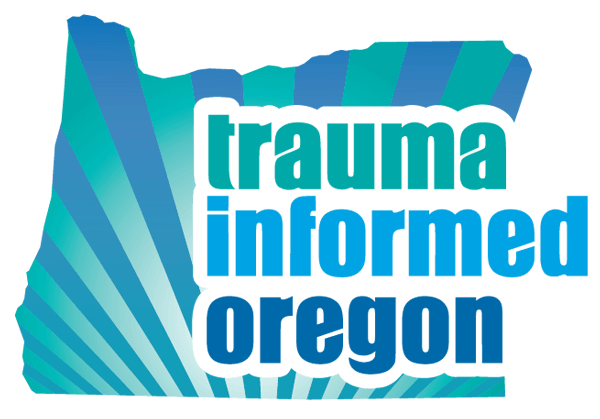Phase 1: Trauma Aware
This is the first developmental phase on the journey toward being trauma informed. Organizational staff and leadership are aware of the prevalence of trauma among those using services as well as the workforce. They are able to explain and advocate for trauma informed care.

 Recognition and Awareness
Recognition and Awareness
Trauma is prevalent among service recipients and those providing services. Past and present trauma can affect an individual’s ability and willingness to engage in services. For many, the service system can be re-traumatizing. Recognizing and being aware of these challenges is the first step toward trauma informed care.
 At least one person in the organization understands the need for trauma informed care and is a champion.
At least one person in the organization understands the need for trauma informed care and is a champion.
What does it look like?
A TIC champion is going to have familiarity with trauma informed care and will be expressing enthusiasm and interest to others. Enthusiasm might look different person to person but you should know it when you see it.
How do you measure?
Champions for TIC will be able to explain what TIC is. They will be able to talk about why it’s needed in the organization, and what benefit it will have. Understanding and awareness will be demonstrated.
 A group in the organization understand the need for trauma informed care and are champions.
A group in the organization understand the need for trauma informed care and are champions.
What does it look like?
A group of individuals will have familiarity with trauma informed care and will be expressing enthusiasm and interest to others.
How do you measure?
Champions for TIC will be able to explain what TIC is. They will be able to talk about why it’s needed in the organization, and what benefit it will have. Understanding and awareness will be demonstrated.
 A majority in the organization understands and can speak about the need for trauma informed care.
A majority in the organization understands and can speak about the need for trauma informed care.
Relates to Standard IVb and Standard IVc in the Standards of Practice
What does it look like?
As awareness grows, more staff will understand the impact of trauma and the need for TIC. At first staff may only talk amongst themselves about these concepts, but the goal is that staff can explain these ideas to others, including service recipients.
How do you measure?
This is a skill that is best demonstrated. You could ask staff whether they believe TIC is needed, however, the essence of this action is whether they can explain it to others. To that end, look for ways to incorporate explanation into a normal routine. For example, staff could work together to develop an elevator speech or short explanation. Then they could pair up and practice their explanations. The more they talk about what TIC is and why it’s important, the easier this will be.
 Organization uses data to validate need for trauma informed care.
Organization uses data to validate need for trauma informed care.
Relates to Standard Vb in the Standards of Practice
What does it look like?
Understanding that trauma is prevalent among service users and staff is a key aspect of this phase. Perhaps the organization gathers information about adversity (past or present) for service recipients as part of its service model. Perhaps the organization surveys staff on work related stress, vicarious trauma, or burnout. We aren’t suggesting collecting data just to collect it, but if it can be meaningfully incorporated into your service model, data is helpful when validating the need for TIC.
How do you measure?
Data about service recipient adversity or trauma is often collected on intake forms or as part of the program. Data about staff stress or trauma can be collected with a periodic survey or as part of supervision. Organizations might consider data related to engagement and satisfaction. Tracking attendance, appointment completions, and staff turnover, for example, can also validate the need for TIC. Here are indicators to consider:

 At least one person in the organization understands the need for trauma informed care and is a champion.
At least one person in the organization understands the need for trauma informed care and is a champion. A group in the organization understand the need for trauma informed care and are champions.
A group in the organization understand the need for trauma informed care and are champions. A majority in the organization understands and can speak about the need for trauma informed care.
A majority in the organization understands and can speak about the need for trauma informed care. Organization uses data to validate need for trauma informed care.
Organization uses data to validate need for trauma informed care.